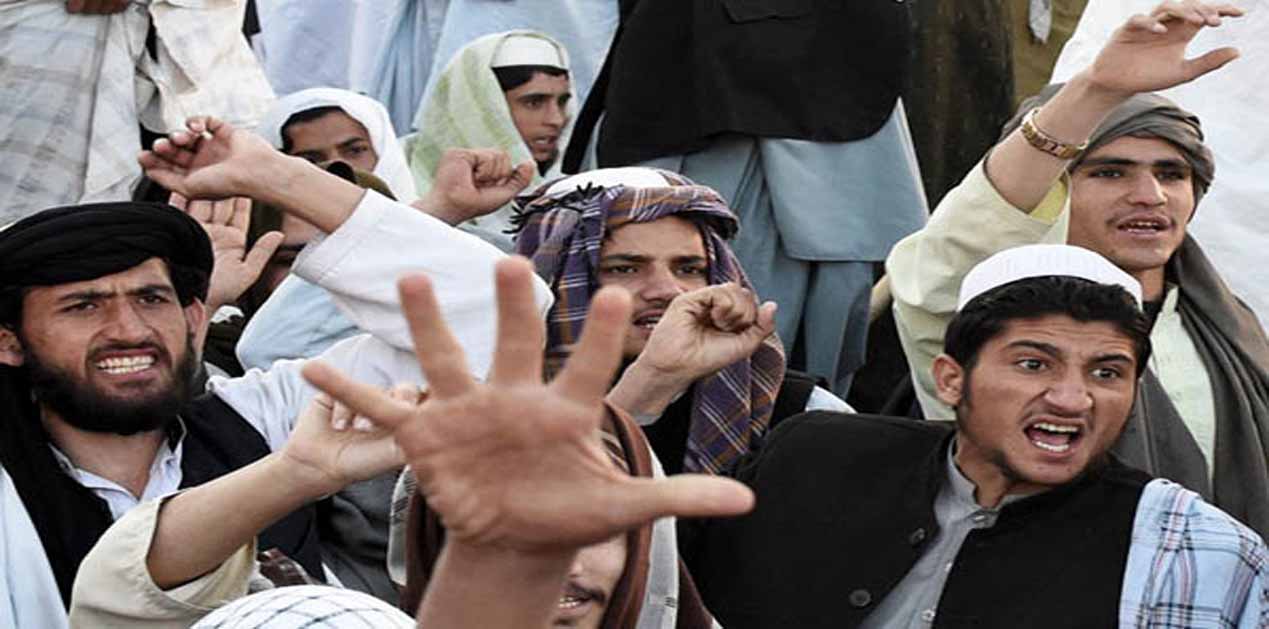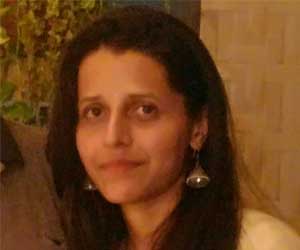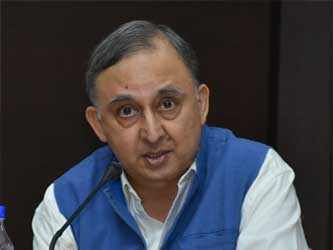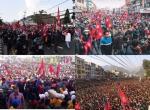Elections 2018 in Pakistan would no doubt be remembered for the victory of Imran Khan. They were essentially a contest between the ‘naya Pakistan’ and ‘tabdeeli’ narrative of Imran Khan, and the ‘vote ko izzat do’ and development narrative of the Sharifs. With the political engineering done by the Army, it was not surprising that Imran Khan’s narrative came out on top.
However, the elections would be equally remembered for the appearance and significant performance of new hardline religious parties and its attendant consequences for Pakistan. This phenomenon marks a significant shift in religious politics and the use of religious sentiment in politics.
The twelve religious parties in the electoral fray collectively polled 5.2 million or 9.58 per cent of the total votes polled. Some analysts have pointed out that in the 2002 elections, the alliance of religious parties- the Muttahida Majlis-e-Amal (MMA) - had polled over 11 per cent. They had managed to lead a provincial government in Khyber Pakhtunkhwa, something that they were not able to repeat in 2018. Likewise, in terms of seats won, the performance of all the religious parties was poor: the MMA won 12 seats for the National Assembly (NA); 10 for the Khyber Pakhunkhwa (KPK), nine for the Balochistan and one for the Sindh assemblies; while the newly minted Tehreek-i-Labbaik Pakistan (TLP) won two seats in Sindh.
It would, however, be simplistic to analyse the performance of the religious parties in terms of seats alone. For one thing, the elections saw the operationalisation of the ‘mainstreaming’ project of the army. This had been mooted in 2016 to give the jihadi and extremist groups legitimacy by bringing them within the political milieu amid growing international pressure against such groups operating in Pakistan. This ‘mainstreaming’ manifested itself in two ways. First, terrorist organisations like the Jamaat-ud-Dawa (JUD)/Lashkar-e-Taiba (LeT) were allowed to set up a political party called the Milli Muslim League (MML). Even though it was not registered its candidates were able to contest the elections on the platform of another party- the Allahu Akbar Tehreek (AAT). Second, terror suspects listed on the Fourth Schedule of Anti-Terrorism Act (ATA) had either their names removed from the list just prior to the elections or were given a free passage by the Election Commission of Pakistan (ECP) to contest the elections.
Second, the rise of these parties served a critical purpose in the elections. This was to divide the vote bank of mainstream parties. Even though barely a year old, the hardline religious parties fielded a surprisingly large number of candidates. The intention was not so much to win but to degrade the religious vote base of mainstream parties, especially of the Pakistan Muslim League-Nawaz (PML-N) as well of the conventional religious parties to facilitate the victory of Imran Khan’s Pakistan Tehreek-i-Insaf (PTI). This objective, as will be seen shortly, was well achieved.
Tehreek-e-Labbaik Pakistan
Tehreek-e-Labbaik (TLP), the political front of Tehreek-e-Labbaik Ya Rasool Allah (TLYRA), represents the Barelvi sect of Sunni Islam. Khadim Hussain Rizvi, called ‘Hazrat Sahib’ by his supporters, founded it in 2016. The purpose was to secure the release of Mumtaz Qadri, the security guard who had gunned down former Punjab Governor Salmaan Taseer in 2011. The TLP’s initial appeal was based on its support for what Mumtaz Qadri had done. Khadim Rizvi was able to mobilise the religiously inclined lower-middle and working class with the slogan: gustakh-e-rasul ki aik saza, sar tan sey juda (there is only one punishment for the blasphemer, beheading). He got further support after Qadri was hanged. Finally, it was an amendment to the Election Act 2017 that altered the candidates’ declaration form pertaining to the khatm-i-nabuwat (finality of the prophet-hood) that provided an opportunity to the TLP to expand its outreach. Rizvi led the Faizabad sit-in that captured the national imagination and enabled him to attract greater public support using the emotional card. The sit-in ended only after a senior army officer, Director General, Rangers Punjab, distributed money to the protesters.
A registered political party, the TLP put up 566 candidates, including 178 for the National Assembly and the rest for provincial assemblies. It emerged as the top fifth party in terms of votes received getting 2.2 million votes for the National Assembly. It thus outstripped major parties like the Muttahida Qaumi Movement-Pakistan (MQM-P) and Awami National Party (ANP) among others. The TLP won two seats in the Sindh provincial assembly — one from Lyari’s PS-107 and the other from PS-115 (Baldia Town). It also beat the MMA in Karachi. In Lahore, the TLP emerged as the third largest party in terms of votes after the PML-N and PTI on the 14 National Assembly seats of the city.
In the process of garnering 2.2 million votes, the TLP has almost decimated the other Barelvi parties like the Jamiat Ulema-e-Pakistan (JUP), that in the 1970s and 1980s were led by stalwarts like the late Maulana Shah Ahmad Noorani and the late Maulana Abdus Sattar Niazi. TLP’s performance for the Punjab assembly polls was especially remarkable. It fielded 262 candidates, including nine women out of 297 constituencies. It outnumbered its rival religious parties by a big margin: the MMA got only 0.44 million votes in Punjab against the TLP’s tally of around 1.9 million votes. In 88 constituencies of the provincial assembly, its candidates remained third, and ranked fourth in another 82.
The Party was clear that its electoral purpose was to thwart the victory of those who were responsible for the amendment on the khatm-i-nabuwat declaration. The target thus became the ruling PML-N since Barelvi voters had traditionally voted for them. Analysts have identified at least 14 National Assembly constituencies in Punjab where the PML-N lost and where the margin of victory was less than the votes polled by TLP. In other words, if the TLP candidates were not in the fray these votes would have gone to the PML-N and it would have won. Significantly, the TLP contested the election on its own and did not seek either seat adjustments or solicit becoming part of any coalition. As a stand-alone party, its performance gives a fair idea of its potential and strength.
The key to the success of the TLP has been two-fold: first, the Barelvi network of mosques and their prayer leaders and the fact that the majority of the population in Pakistan is Barelvi. Imams of mosques in various cities refer to Rizvi as ‘Ameerul Mujahideen’. Hence, getting support in the name of a highly emotive issue like defending the finality of the Prophet-hood was not a problem.
Muttahida Majlis-e-Amal
Muttahida Majlis-e-Amal (MMA) is the alliance of mainstream and long-established religious parties that is led by Maulana Fazl-ur-Rehman. The constituents are Jamiat Ulema-e-Islam-Fazl (JUI-F) headed by Maulana Fazlur Rehman, Jamaat-e-Islami (JI) led by Siraj-ul-Haq, Jamiat Ulema-e-Pakistan (JUP), Markazi Jamiat Ahle Hadith and Tehreek-e-Jafaria led by Allama Sajid Naqvi. Parties represented belong to Deobandi, Ahl-e-Hadith and Barelvi sects of Sunni Islam and one Shia group. The alliance put up 595 candidates of which 191 were for the National Assembly and the rest for provincial assemblies. It won 12 seats with 2.2 million votes for the National Assembly.
The MMA was founded prior to the general election in 2002 that was held under Pervez Musharraf. The alliance, however broke up in 2008 after the JI boycotted the elections while the Maulana formed an alliance with the PPP government. In the 2013 elections, an emergent PTI eroded the vote bank of the religious parties in Khyber Pakhtunkhwa (KPK). The fear of being further marginalised brought the religious parties together again in 2018. However, the alliance was badly mauled in KPK where both the Maulana and Sirajul Haq lost. In Punjab and in Karachi, the TLP and the PTI eroded their strength.
Quite possibly, the MMA constituents could have fared even worse had they contested from their own respective platforms. The defeat of the top leadership of the MMA is probably reflective of the disillusionment of voters with the mainstream Islamic parties. Likewise, the surprising performance of the hardline parties and the expansion of the TLP’s vote base could be indicative of the voters being attracted to more extreme positions. At the time of writing, the MMA unity is under threat as a key component, the JI is considering leaving the alliance.
MILLI MUSLIM LEAGUE
The Milli Muslim League (MML), the political front of the banned JuD/LeT was founded in August 2017. Its allegiance is to the Ahl-e-Hadith sect of Sunni Islam. 260 of its candidates contested the elections- 73 for National Assembly including Hafiz Saeed’s son Talha Saeed and son-in-law Khalid Waleed and the rest for provincial assemblies. The fact that the photograph of LeT supremo Hafiz Saeed appeared on the campaign material used by the candidates made the connection between the LeT and the MML obvious. It was a thinly disguised attempt of the establishment to enable the JuD/LeT to be able to operate legally within Pakistan.
It is significant that Hafiz Saeed had earlier strongly opposed participation in elections, calling western-style democracy as un-Islamic. His sanctioning participation in the 2018 elections is a fundamental break with the ideological moorings of the organisation that change in society can be brought about only through jihad. Clearly, the temptation of being ‘mainstreamed’ and acquiring political legitimacy far outweighed such ideological compulsions. Perhaps, the pressures on Pakistan of the Financial Action Task Force (FATF) and the necessity of showing action against terrorist groups like the JuD would have weighed heavily on the army that would have ‘persuaded’ Saeed accordingly. Though the party did not win any seat it got 171,356 votes for the NA.
Assessment
The rise of the TLP in the 2018 elections is an important development that could have far-reaching significance in the future for several reasons.
First, the breadth and depth of the vote share garnered by the TLP and the other religious parties reflects a fairly strong reservoir of support for extremist thought in Pakistan. A comparison of its performance with that of the MMA would show that more radicalised elements within religious sects are gaining popularity. The fact that these hardline parties were part of an electoral process gives them legitimacy that will grow in future.
Second, the electoral empowerment of the TLP also elevates the Barelvis to the forefront of the national political scene. For long living under the shadow of the more aggressive Deobandi groups, they have now been able to mobilise their larger support base on an emotive issue that resonates with their supporters. Such Barelvi radicalism is likely to be more in evidence in the days to come.
Third, the entry of the Barelvi TLP and the Salafi MML implies that these two parties would now be contesting the religious space in Pakistan that had hitherto been monopolised by the Deobandi groups. This contrasts with the efforts of the older religious parties like the Jamaat-e-Islami and the Jamiat Ulema-e-Islam as well as of their alliance, the MMA that sought to bring together religious voters regardless of ideological differences. The implication of this development could be to further deepen the sectarian divide in Pakistan.
Fourth, Pakistan’s first-past-the-post (FPTP) voting system, where constituency voting matters, has not benefitted the religious parties. Their support base is thinly spread across the country. It has been estimated that if Pakistan was following the proportional representation system, then the TLP could have got more than 10 seats in the National Assembly.
Fifth, given the kind of vote share that these parties managed in such a short time after their creation showcases that they will grow in strength from here on. In fact, some analysts were impressed by their election management skills in some constituencies. However, paucity of funds and trained volunteers were obvious handicaps. These could get rectified in the future.
Finally, ‘mainstreaming’ of terror groups per se is a laudable objective provided the groups are first disarmed, de-radicalised and re-educated. Without these essential steps any hopes of turning them away from terrorism and radicalism would backfire. In fact, the danger could be that having got legitimacy they would infect the mainstream religious parties too. These parties, for the sake of their own self-preservation would have to match the radical rhetoric of the TLP. Likewise, the mainstream political parties may not be able to escape the pressure to move further to the right to firewall their own constituencies.
(Tilak Devasher, a former Special Secretary, Cabinet Secretariat, Government of India, is a Consultant, The Pakistan Project, at the Vivekananda International Foundation, New Delhi. He is the author of ‘Pakistan: Courting the Abyss’ and ‘Pakistan: At the Helm’.
Shruti Punia is a Young Professional, Vivekananda International Foundation, New Delhi.)
Image Source: http://newsweekpakistan.com/daisnews/wp-content/uploads/2015/01/hebdo-protests-pakistan.jpg











Post new comment